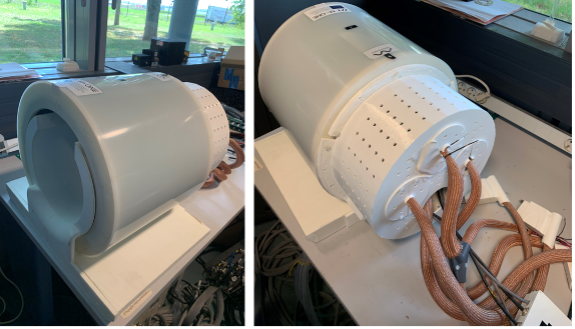Purpose
The use of dielectric pads to redistribute the
radiofrequency fields is currently a popular solution for 7T MRI practical applications, especially in
brain imaging. In this work, we tackle several downsides of the previous generation of dielectric pads. This new
silicon carbide recipe makes them MR invisible and greatly extends the performance lifespan.
Method
We produce a set of two 10x10x1cm3 dielectric pads based on silicon carbide (SiC) powder dispersed in 4-Fluoro 1, 3-dioxalan-2-one (FEC) and
polyethylene Glycol (PEG). The stability of the complex permittivity and the invisibility of the pads are characterized experimentally. Numerical simulations are carried out to evaluate global and local
SAR over the head in presence of the pads. B0, B1+ and standard imaging sequences are performed on healthy volunteers.
Results
SiC pads are compared to state-of-the-art
perovskite based dielectric pads with similar
dielectric properties (barium titanate). Numerical simulations confirm that head and local SAR are similar. MRI measurements confirm that the pads do not induce susceptibility artefacts and improve B1+ amplitude in the
temporal lobe regions by 25% on average.
Conclusion
We demonstrate the long-term performance and invisibility of these new pads to increase the contrast in the brain temporal lobes in a commercial 7 T MRI head coil.
